
April 20 - May 20
Taurus is an Earth Sign
Taurus is a Fixed Sign

Taurus is ruled by Venus

April 20 - May 20
Taurus is an Earth Sign
Taurus is a Fixed Sign

Taurus is ruled by Venus
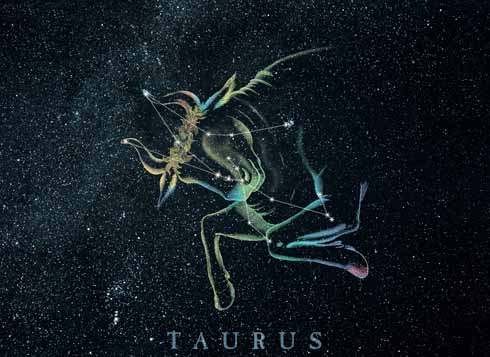
Taurus is the second astrological sign in the Zodiac. It spans the 30-60th degree of the zodiac, between 27.25 and 54.75 degree of celestial longitude, which the Sun transits this area on average between April 20 to May 20 each year.
In Sidereal astrology, the sun currently transits the constellation of Taurus from May 16th to June 15th (approximately). Individuals born during these dates, depending on which system of astrology they subscribe to, may be called Taureans.
Taurus governs the throat and neck and its subjects need to beware throat infections, goiter and respiratory ailments such as asthma. They are said to be at risk of diseases of the genitals, womb, liver and kidneys, and of abscesses and rheumatism. Because their body type has an inclination to physical laziness, Taureans can be overweight.
Positive Traits:
Patient, reliable, warmhearted, loving,
persistent, determined, placid, security
Negative Traits:
Jealous
possessive
resentful
inflexible
self-indulgent
greed
stubborness
The Taurean's characteristics are solidity, practicality, extreme determination and strength of will - no one will ever drive them, but they will willingly and loyally follow a leader they trust. They are stable, balanced, conservative good, law-abiding citizens and lovers of peace, possessing all the best qualities of the bourgeoisie. as they have a sense of material values and physical possessions, respect for property and a horror of falling into debt, they will do everything in their power to maintain the security of the status quo and be stupidly hostile to change.
Mentally, they are keen-witted and practical rather than intellectual, but apt to become fixed in their opinions through their preference for following accepted and reliable patterns of experience. Their character is generally dependable, steadfast, prudent, just, firm and unshaken in the face of difficulties. Their vices arise from their virtues, going to extremes such as being too slavish to the conventions they admire, obstinately and exasperatingly self-righteous, unoriginal, rigid, ultraconservative, argumentative, querulous bores, stuck in a self-centered rut. They may develop a brooding resentment through nursing a series of injuries received and, whether their characters are positive or negative, they need someone to like their egos with a frequent, "Well Done!"
They are faithful and generous friends with a great capacity for affection, but rarely make friends with anyone outside their social rank, to which they are ordinarily excessively faithful. In the main, they are gentle, even tempered, good natured, modest and slow to anger, disliking quarrelling and avoiding ill-feeling. If they are provoked, however, they can explode into violent outbursts of ferocious anger in which they seem to lose all self-control. Equally unexpected are their occasional sallies into humor and exhibitions of fun.
Although their physical appearance may belie it, they have a strong aesthetic taste, enjoying art, for which they may have a talent, beauty (actively recoiling from anything sordid or ugly) and music. They may have a strong, sometimes unconventional, religious faith. Allied to their taste for all things beautiful is a love for the good things of life pleasure, comfort, luxury and good food and wine and they may have to resist the temptation to over indulgence, leading to drunkenness, gross sensuality, and covetousness.
In their work, Taureans are industrious and good craftsmen, and are not afraid of getting their hands dirty. They are reliable, practical, methodical and ambitious, within a framework of obedience to superiors. They are at their best in routine positions of trust and responsibility, where there is little need of urgency and even less risk of change, and a pension at the end. Yet they are creative and good founders of enterprises where the rewards of their productiveness some from their own work and not that of others.
They can flourish in many different trades and professions: banking, architecture, building, almost any form of bureaucracy, auctioneering, farming, medicine, chemistry, industry Taureans make good managers and foremen surveying, insurance, education and, perhaps surprisingly, music and sculpture. They make an ideal trustee or guardian, and can attain eminence as a chef. Some Taureans are gifted enough in singing to become opera stars or to excel in more popular types of music.
They are more than averagely amorous and sensually self-conscious, but sexually straightforward and not given to experiment. They make constant, faithful, home loving spouses and thoughtful, kindly parents, demanding too much of neither their spouses nor children. They can be over possessive and may sometimes play the game of engineering family rows for the pleasure of making up the quarrel. If anyone offends their amore proper they can be a determined enemy, though magnanimous in forgiveness if their opponent makes an effort to meet them halfway.
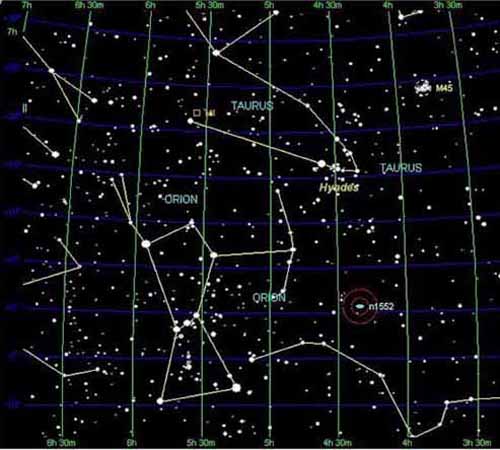
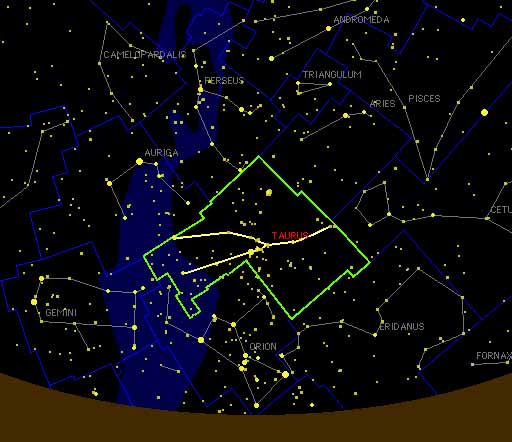
Taurus is a large and prominent constellation in the northern hemisphere's winter sky, between Aries to the west and Gemini to the east; to the north lie Perseus and Auriga, to the southeast Orion, to the south Eridanus, and to the southwest Cetus. In September and October, Taurus is visible in the evening along the eastern horizon. The most favorable time to observe Taurus in the night sky is during the months of December and January. By March and April, the constellation will appear to the west during the evening twilight.
This constellation forms part of the zodiac, and hence is intersected by the ecliptic. This circle across the celestial sphere forms the apparent path of the Sun as the Earth completes its annual orbit. As the orbital plane of the Moon and the planets lie near the ecliptic, they can usually be found in the constellation Taurus during some part of each year. The galactic plane of the Milky Way intersects the northwest corner of the constellation and the galactic anticenter is located near the border between Taurus and Auriga. A ring-like galactic structure known as the Gould's Belt passes through the Taurus constellation.
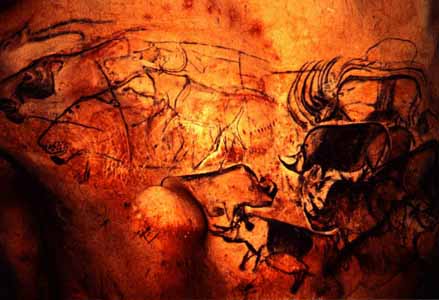
The identification of the constellation of Taurus with a bull is very old, certainly dating to the Chalcolithic, and perhaps even to the Upper Paleolithic. Michael Rappengluck of the University of Munich believes that Taurus is represented in a cave painting at the Hall of the Bulls in the caves at Lascaux (dated to roughly 15,000 BC), which he believes is accompanied by a depiction of the Pleiades. The name "seven sisters" has been used for the Pleiades in the languages of many cultures, including indigenous groups of Australia, North America and Siberia. This suggests that the name may have a common ancient origin.
Taurus marked the point of vernal (spring) equinox in the Chalcolithic and the Early Bronze Age (the "Age of Taurus"), from about 4000 BC to 1700 BC, after which it moved into the neighboring constellation Aries. The Pleiades were closest to the Sun at vernal equinox around the 23rd century BC.
In Babylonian astronomy, the constellation was listed in the MUL.APIN as GU4.AN.NA "The Heavenly Bull".] As this constellation marked the vernal equinox, it was also the first constellation in the Babylonian zodiac and they described it as "The Bull in Front". The Akkadian name was Alu.
In the Mesopotamian Epic of Gilgamesh, one of the earliest works of literature, the goddess Ishtar sends Taurus, the Bull of Heaven, to kill Gilgamesh for spurning her advances. Gilgamesh is depicted as the neighboring constellation of Orion, and in the sky they face each other as if engaged in combat.
In early Mesopotamian art, the Bull of Heaven was closely associated with Inanna, the Sumerian goddess of sexual love, fertility, and warfare. One of the oldest depictions shows the bull standing before the goddess' standard; since it has 3 stars depicted on its back (the cuneiform sign for "star-constellation"), there is good reason to regard this as the constellation later known as Taurus.
To the early Hebrews, Taurus was the first constellation in their zodiac and consequently it was represented by the first letter in their alphabet, Aleph.
In Buddhism, legends hold that Gautama Buddha was born when the Full Moon was in Vaisakha, or Taurus. Buddha's birthday is celebrated with the Wesak Festival, or Vesakha , which occurs on the first Full Moon in Taurus.
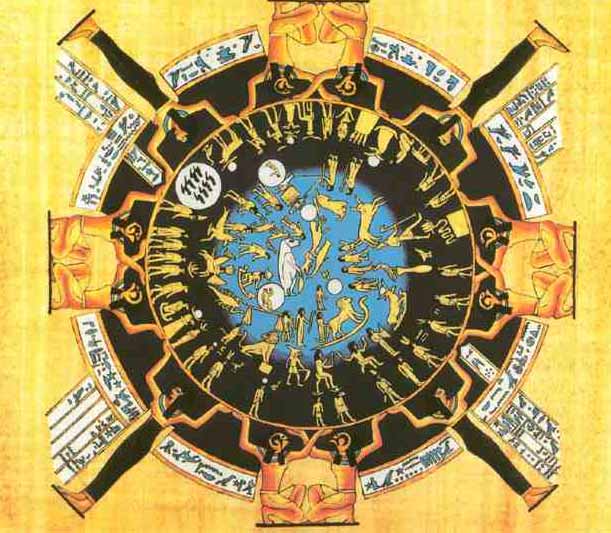
The same iconic representation of the Heavenly Bull was depicted in the Dendera zodiac, an Egyptian bas-relief carving in a ceiling that depicted the celestial hemisphere using a planisphere. In these ancient cultures, the orientation of the horns was portrayed as upward or backward. This differed from the later Greek depiction where the horns pointed forward.
To the Egyptians, the constellation Taurus was a sacred bull that was associated with the renewal of life in spring. When the spring equinox entered Taurus, the constellation would become covered by the Sun in the western sky as spring began. This "sacrifice" led to the renewal of the land
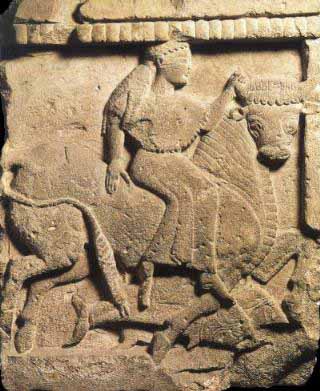
In Greek mythology, Taurus was identified with Zeus, who assumed the form of a magnificent white bull to abduct Europa, a legendary Phoenician princess. In illustrations of Greek mythology, only the front portion of this constellation are depicted; this was sometimes explained as Taurus being partly submerged as he carried Europa out to sea. A second Greek myth portrays Taurus as Io, a mistress of Zeus. To hide his lover from his wife Hera, Zeus changed Io into the form of a heifer. Greek mythographer Acusilaus marks the bull Taurus as the same that formed the myth of the Cretan Bull, one of The Twelve Labors of Heracles.
In mythology Taurus is often associated with the Greek myth of the bull-form taken by Zeus in order to win Europa. Taurus is also associated with the Greco-Roman goddess Aphrodite/Venus and sometimes also the goddesses Hera/Juno, Ishtar, Isis, Freyja, and Frigg and the gods Pan, Dionysus/Bacchus, Xolotl, and Quetzalcoatl. The astrological symbol for Taurus represents the head and horns of the bull.
Taurus became an important object of worship among the Druids. Their Tauric religious festival was held while the Sun passed through the constellation.
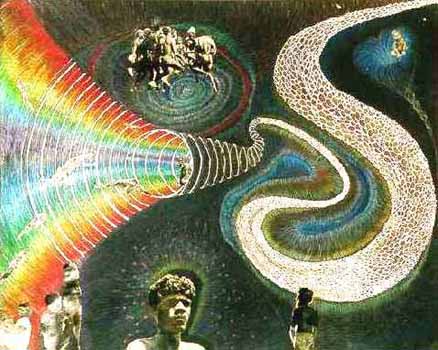
Many ages ago, in the dreamtime of the aborigines of Australia, lived seven lovely ice maidens, daughters of a lofty, snow-topped mountain and the ice-cold stream that flowed from the hills. Although beautiful, they never warmed to the attentions of the mortal men who courted them. Then one day, Warrunnah, a naive but clever young man, beguiled two of the maidens and took them to live with him in his village. The others returned to their home in the sky.
Of course, it was not long until Warrunnah discovered the truth that the sisters were ice maidens; that their beautiful silvery tresses were like the icicles that hung from the trees in winter. He was disappointed, and took the maidens to his campfire and tried to melt the icy crystals. As the ice melted, though, the water quenched the fire. The vestals remained ice maidens, but their cold brilliance had been dimmed.
The two sisters were welcomed and well treated in the village, yet they became increasingly lonely without the other five, and they longed to return to their former home above in the clear heavens. They could see their twinkling sisters beckoning to them from afar.
Wurrunnah sent the maidens into the forest one day to gather wood for their campfire. And after a short while, they met a great pine tree, which happened to be a member of their own totem. The pine tree extended itself to the sky and allowed the maidens to climb up, up, up to the home of their sisters.
But the two never regained the brightness they had lost to Wurrunnah's fire, and that is why there are five bright stars and two dim ones in the Pleiades.
As the Australian aborigines considered the Pleiades to be the campfire of the women, they also thought the campfire of the men to be the group we know as the Hyades, also in Taurus. The women were clustered together so that they might enjoy telling stories among themselves. Some of the men sat quietly by their fire, but others were boastful and roamed about, shouting to all who would listen - the original Bull session!
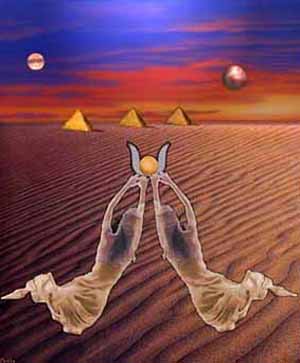
Neil Mann interpretation: began in ca. 4300 BC and ended in ca. 2150 BC.
Shephard Simpson interpretation: began ca. 4525 BC to ca. 1875 BC
This age is notable for the building of the Pyramids, during the Old Kingdom of Egypt and the Middle Kingdom of Egypt. They personify structure, solidity, stability and attempts at eternity, keywords of Taurus. The completed Great Pyramid of Khufu, clad in smooth pure white limestone, must have been a sight of dazzling beauty in the sunlight. Beauty is another keyword of Taurus.
Taurus is associated with the metal copper, and bronze (an alloy of copper and tin) was for the first time smelted and worked into bronze swords during the early phase of this era.
Papyrus was invented during this time, enabling improved writing techniques. It could be manufactured into very long strips that could be rolled (but not yet folded) into scrolls or rolls for efficient storage and handling. (The Taurus glyph invokes the image of the partially unrolled scroll).
Traits of Taurus such as 'stubbornness' and 'strength' but at the same time 'sensuality' may be attributed to civilizations such as Ancient Egypt's.